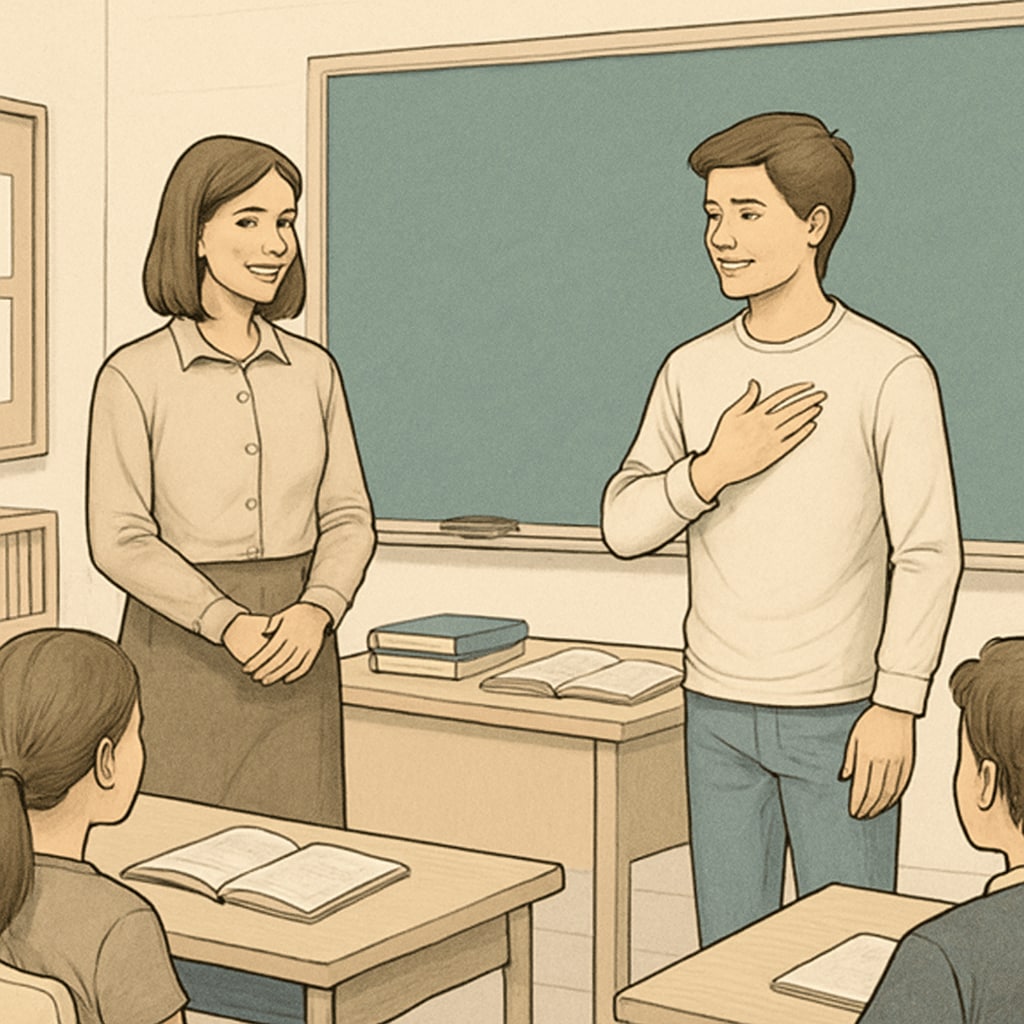In the dynamic world of education, moments of sincere connection between students and teachers often carry profound meaning. A recent incident where a student expressed heartfelt gratitude showcased the importance of classroom interaction, teacher influence, and mutual respect in shaping meaningful education experiences. This story reflects the essence of what it means to create an environment where students feel seen and valued.

The Importance of Genuine Teacher-Student Interaction
Genuine interaction between teachers and students goes beyond academic achievements. For example, when a student takes the time to say “thank you” after class, it highlights the impact of a teacher’s dedication. Such moments remind educators that their efforts in nurturing minds and hearts are not unnoticed. Teachers play a pivotal role in inspiring confidence, encouraging curiosity, and creating a safe space for students to voice their thoughts.
According to Wikipedia’s article on teacher-student relationships, positive interactions are linked with improved academic performance and mental well-being. This reinforces the idea that education is not just about imparting knowledge but also about fostering relationships that empower students.
How Gratitude Shapes the Educational Environment
Gratitude, even in its simplest form, can transform the classroom atmosphere. When students express appreciation, it motivates teachers to continue their efforts and contributes to a culture of respect and collaboration. For instance, a student’s “thank you” may seem small, but it is often a reflection of the deeper emotional connection built during lessons. These moments can remind educators of their profound influence, encouraging them to strive for excellence in their teaching methods.
Moreover, gratitude helps students develop emotional intelligence, a skill critical for their future. As Britannica’s definition of emotional intelligence explains, this ability enables individuals to navigate social complexities and build strong relationships.

Creating an Environment That Encourages Gratitude
How can educators foster a classroom where gratitude thrives? Here are some actionable strategies:
- Encourage open communication: Teachers should create spaces where students feel comfortable sharing their thoughts and emotions.
- Model gratitude: Teachers can lead by example, expressing their appreciation for students’ efforts and participation.
- Celebrate small victories: Acknowledging achievements, no matter how minor, reinforces the culture of appreciation.
- Build trust: When students know their voices are heard, they are more likely to express gratitude and engage positively.
These practices not only enhance teacher-student relationships but also contribute to students’ personal growth, preparing them for life outside the classroom.
The Ripple Effect of Gratitude in Education
The impact of gratitude in education extends beyond the classroom. Students who learn to appreciate their teachers often carry this value into their interactions with peers, family, and society. Such lessons have a ripple effect, cultivating a generation that values empathy and connection. Additionally, teachers who receive gratitude are reminded of their purpose, which fuels their passion for education and benefits future students.
In conclusion, moments of student gratitude highlight the importance of genuine teacher-student interaction and the influence of educators in shaping lives. By fostering environments where respect and appreciation flourish, schools can cultivate meaningful educational experiences that leave lasting impressions on all involved.


